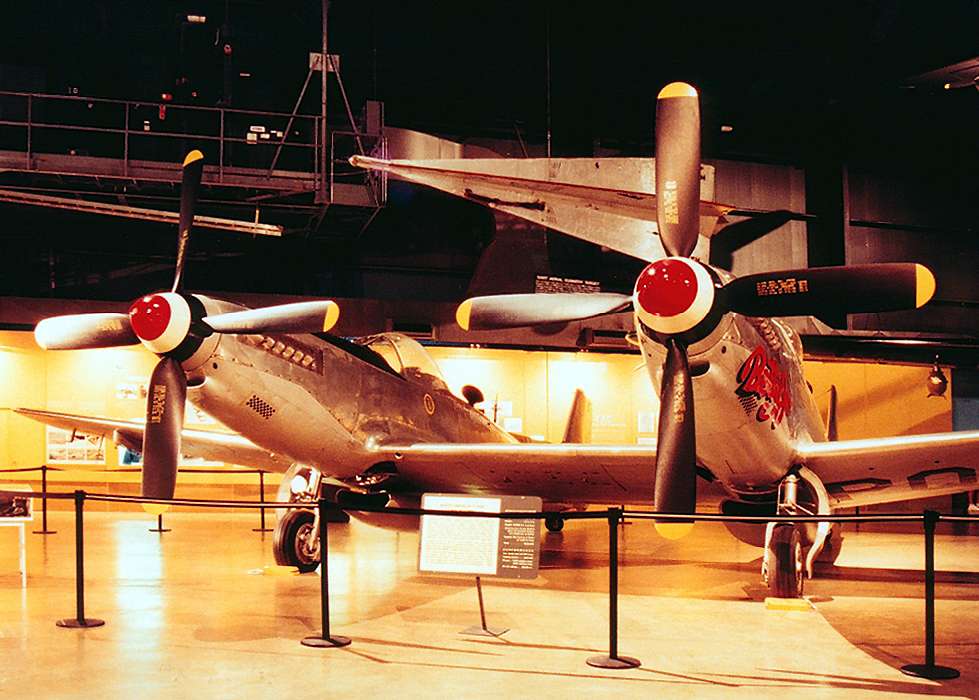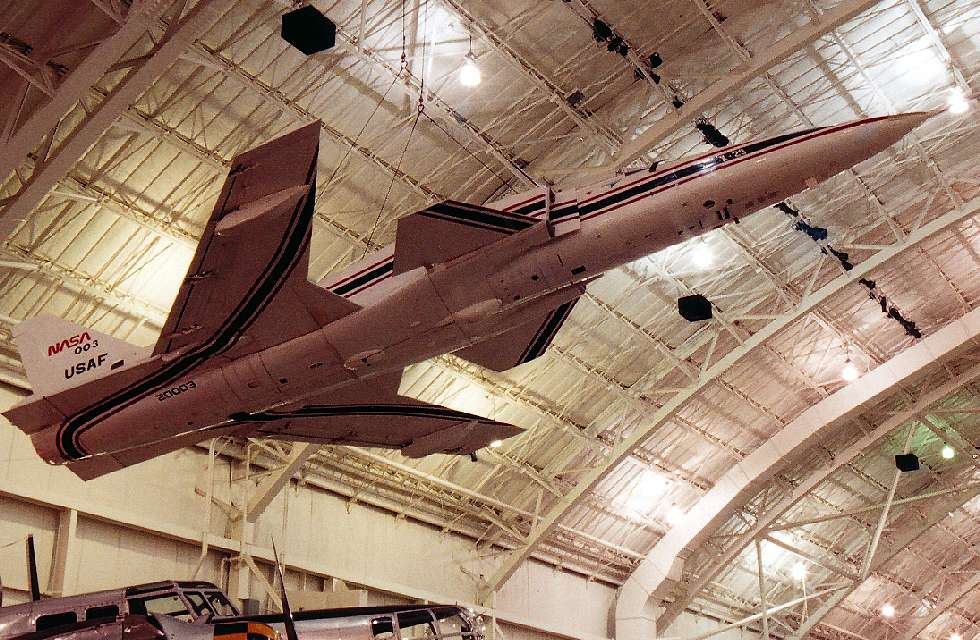Weird Aircraft at the USAF Museum at Dayton
|
It was intended for very long duration flight, with one flying non-stop from Hawaii to New York. It had two pilots to reduce fatigue, but I'm not sure if they split duties in a dogfight. |
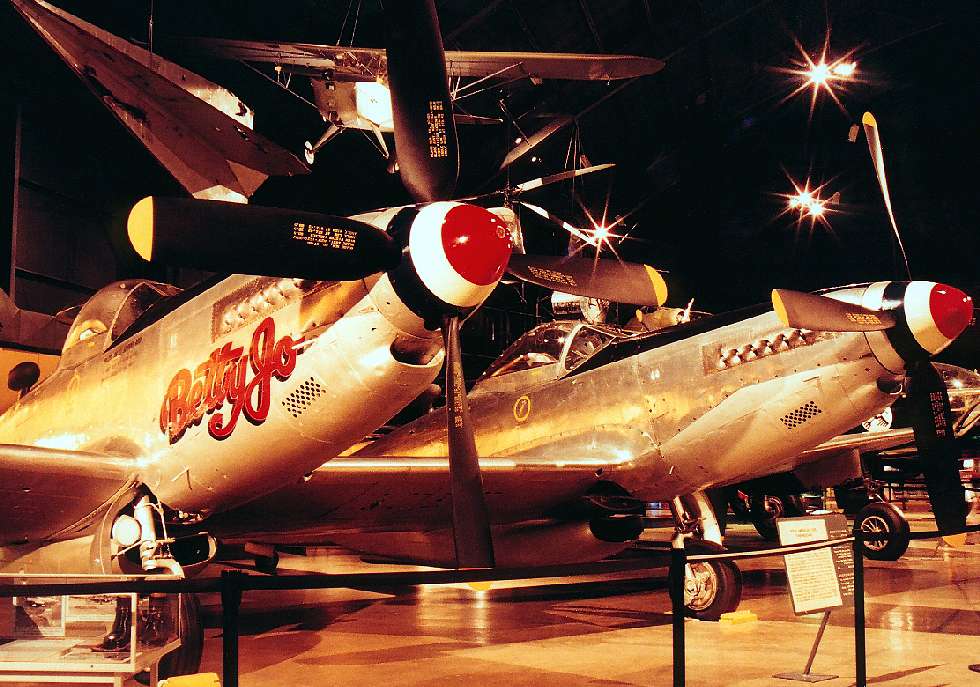 |
|
The Twin Mustang was the last propeller driven fighter the USAF bought in any quantity, with 273 manufactured. At 482 mph it was certainly fast, allowing it to shot down the first three North Korean aircraft of the Korean war. It could also carry 4000 pounds of bombs, the same as early B-17 Flying Fortresses. |
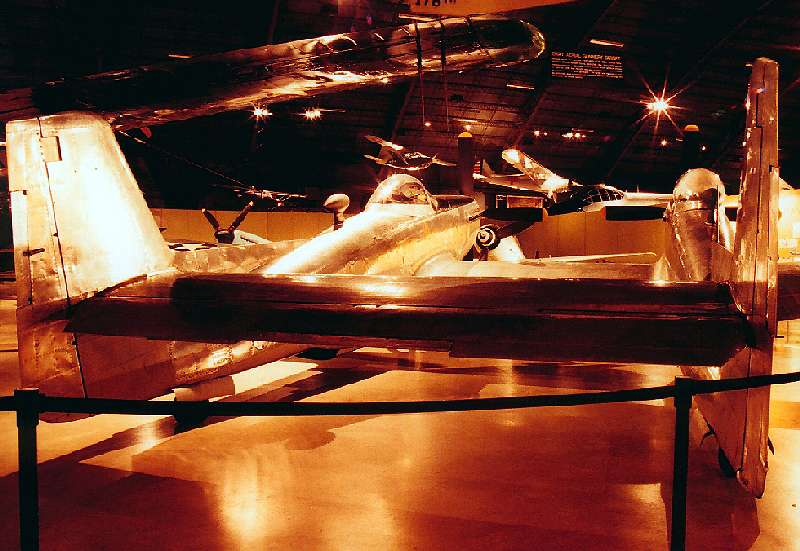 |
|
The Goblin is one of America's earliest jets, first flying in 1948. Only 14 feet (4.3 meters) long, it was intended to have a top speed of 650 mph and flying time of 80 minutes. The concept didn't get too far, though, with only two aircraft built and very few flights made. After only a year and with just a few drops and recoveries from B-29 Superfortresses, the program was cancelled. |
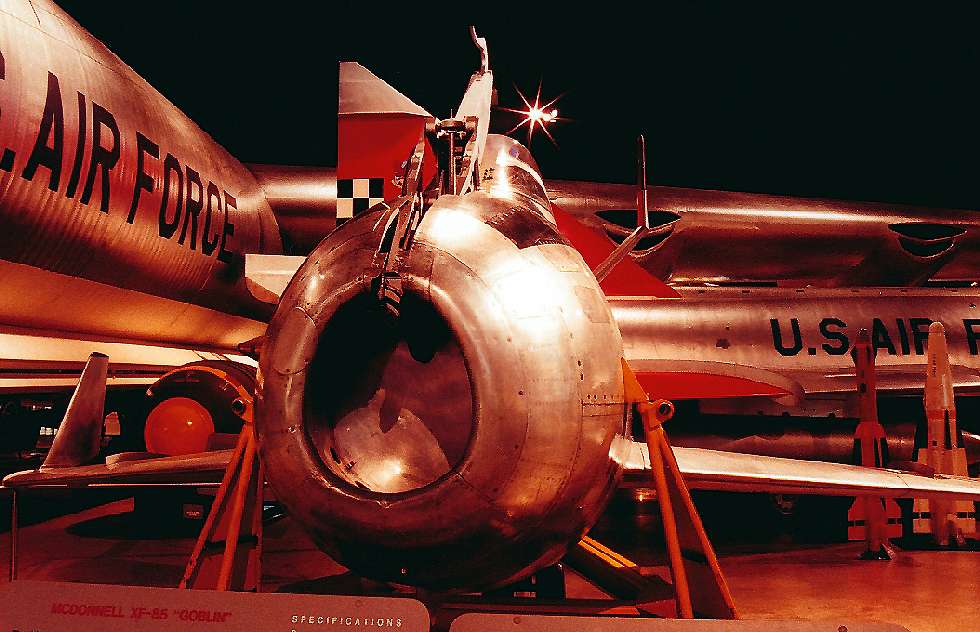 |
|
The Ryan X-13 Vertijet was another innovative effort to gain a competitive edge during the Cold War, made possible by the improved power of jet engines. The Vertijet relied on a British Rolls-Royce Avon jet engine with a thrust of 10000 pounds to lift its 7200 pound maximum weight vertically from the ground. |
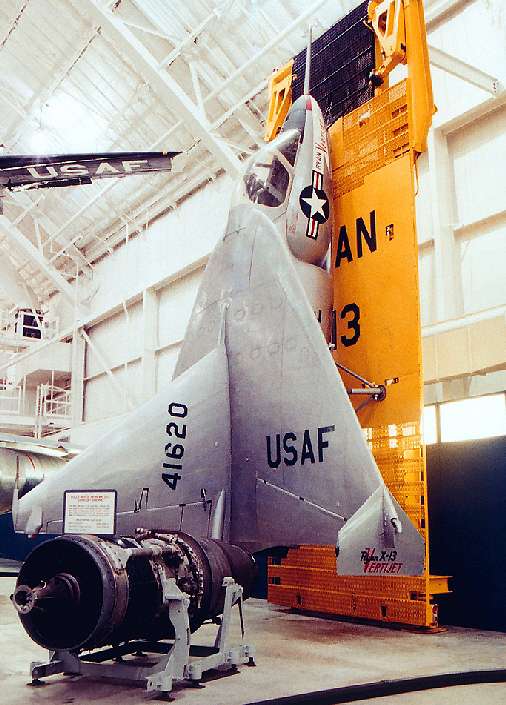 |
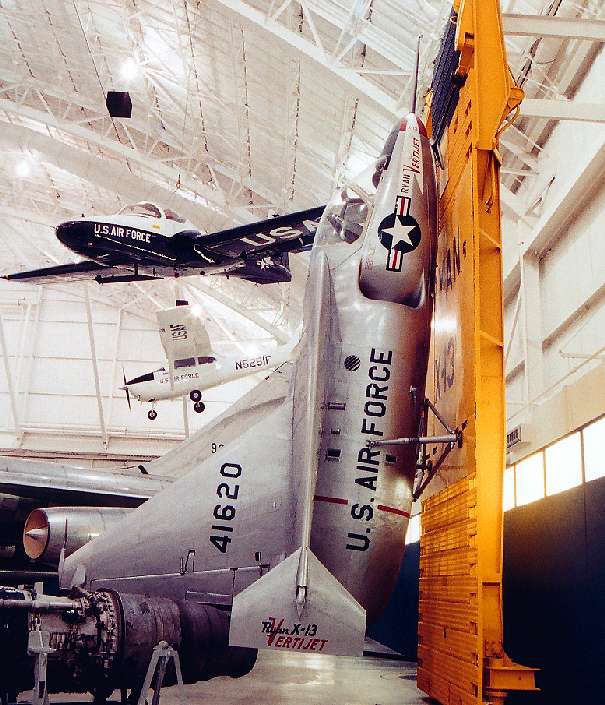 |
First flying in 1956, the plane made the transition from vertical flight to horizontal flight and back to a vertical landing in April of 1957. The intention was for the plane to take off and land with the use of the frame shown in this photograph, but the difficulty of returning to the vertical orientation and then slowly backing down several hundred feet was simply too difficult, and was one reason the aircraft was rejected for production. |
|
This ungainly creature, looking for all the world like an upside-down bathtub, is the Northrop Tacit Blue aircraft, which was used to develop the stealth technologies used on the B-2 Spirit bomber. |
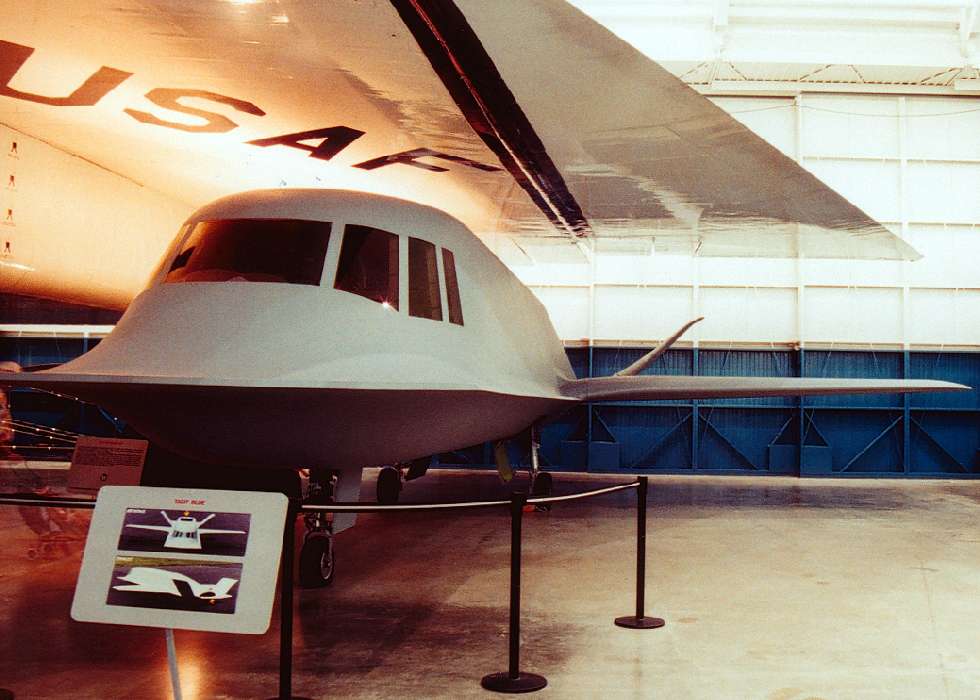 |
